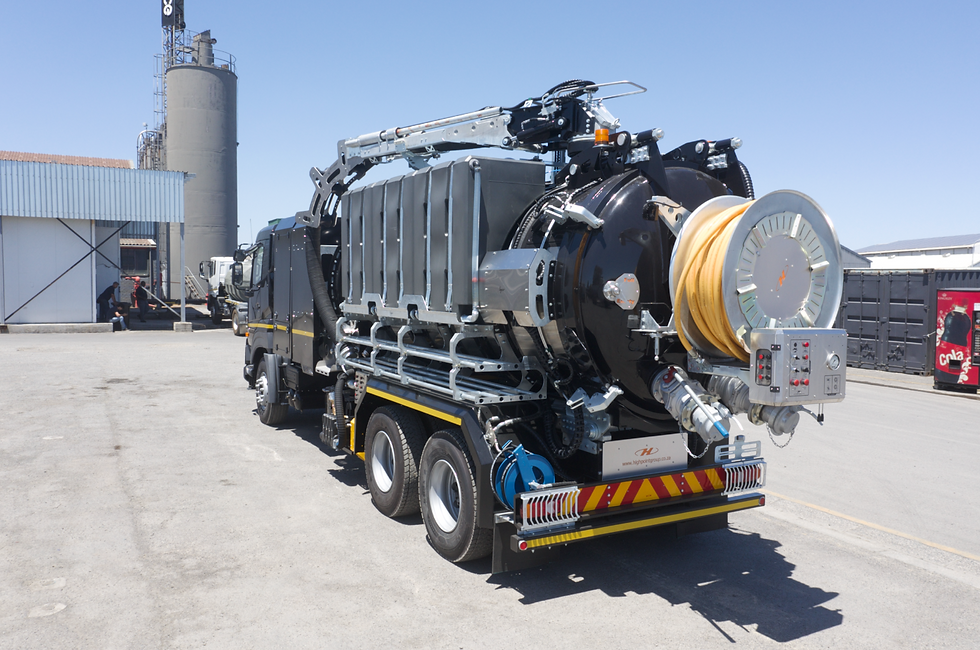Breathing New Life into Pipelines: A Comprehensive Exploration of Pipeline Rehabilitation
- Camjet Pty Ltd

- Aug 27, 2024
- 2 min read
Updated: May 21
In the lifecycle of pipelines, the inevitability of aging and wear-and-tear necessitates strategic interventions to ensure sustained functionality and safety.

From innovative trenchless technologies to the use of advanced materials, we will delve into the expert strategies that play a pivotal role in extending the life of pipelines and mitigating the risks associated with deterioration. Join us on a journey through the depths of pipeline rehabilitation to gain insights into the importance of regular inspection, the influential factors guiding method selection, and how this proactive approach contributes to forging a sustainable and resilient pipeline infrastructure.
Understanding Pipeline Rehabilitation
Pipeline rehabilitation is a holistic approach aimed at revitalizing pipelines that have succumbed to the effects of aging, corrosion, or damage. Rather than opting for costly and disruptive pipeline replacement, rehabilitation techniques focus on restoring structural integrity, enhancing performance, and prolonging the lifespan of existing pipelines. This not only proves to be a more cost-effective solution but also minimizes environmental impact and reduces downtime.
Exploring Rehabilitation Methods and Technologies
A key facet of pipeline rehabilitation lies in the array of methods and technologies available to industry experts. Trenchless technologies, such as cured-in-place pipe (CIPP) lining and pipe bursting, have revolutionized the rehabilitation landscape by allowing repairs without the need for extensive excavation. Innovations in materials, including epoxy resins and composite wraps, offer durable solutions for reinforcing and protecting pipelines against corrosion and external pressures. This comprehensive toolbox of rehabilitation techniques empowers engineers and operators to tailor their approach based on the specific challenges presented by each pipeline.
Importance of Regular Inspection
Central to an effective pipeline rehabilitation strategy is the emphasis on regular inspection. Routine inspections, often conducted through advanced inspection tools like smart pigs and robotic crawlers, enable early detection of issues such as corrosion, cracks, and deformities. Timely identification of these concerns not only facilitates prompt rehabilitation but also minimizes the extent of damage, reducing the overall cost and complexity of the rehabilitation process.
Factors Influencing Method Selection
The choice of rehabilitation method is influenced by a myriad of factors, including the pipeline's material, diameter, location, and the nature of the issues at hand. Trenchless technologies are particularly advantageous in urban environments where minimal disruption is crucial, whereas traditional methods might be more suitable for remote or larger-scale projects. The expertise of engineers, coupled with a thorough understanding of these factors, guides the selection of the most appropriate rehabilitation method for each unique scenario.
Contributing to Sustainable and Resilient Infrastructure
Pipeline rehabilitation is not merely a reactive measure; it is a proactive strategy contributing to the creation of a sustainable and resilient pipeline infrastructure. By breathing new life into aging pipelines, rehabilitation mitigates the environmental impact of replacement, optimizes the use of existing resources, and ensures the continued reliability of our critical infrastructure network.
Pipeline rehabilitation emerges as a crucial chapter in the story of maintaining and fortifying our infrastructure network. From trenchless technologies to the careful selection of materials, the rehabilitation methods reflects the industry's commitment to adaptability and sustainability.




Comments